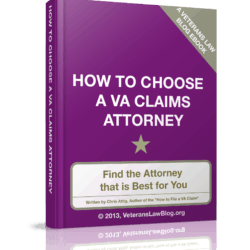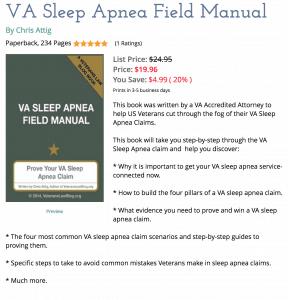It is widely known that veterans particulate matter and burn pit exposure claims have been next to impossible for veterans to win on the first claim or appeal.
That is about to change.
If you are a veteran who served in Southwest Asia since August 2, 1990, or in certain other areas since November 2011, the VA will begin (on August 2, 2021) processing VA Disability claims to service connect asthma, rhinitis and sinusitis on a presumptive basis, so long as those conditions manifest within 10 years of separation from service.
This presumption is based on the recent conclusions of two reports. First, a 2011 report regarding Long-Term Health Consequences of Exposure to Burn Pits in Iraq and Afghanistan. Second, a 2020 report from the National Academies of Science, Engineering and Medicine (“Respiratory Health Effects of Airborne Hazards Exposures in the Southwest Asia Theater of Military Operations”).
Bottom Line Up Front: these reports found that veterans particulate matter exposures have a strong correlation to three conditions in veterans with certain service in Southwest Asia: rhinitis, chronic asthma and sinusitis.
At this time, sleep apnea was not included on the list of presumptives – in all likelihood because it is the most common respiratory disorder experienced and claimed by veterans of the Gulf War era.
(I predicted this back in 2013 – 2014, when I first published the VA Sleep Apnea Field Manual, teaching veterans how to file and prove their claims for sleep apnea. (Subscribers to the Veterans Law Blog® get free access to the eBook version of this field manual, and free access to the video course I am creating for sleep apnea claims. You can purchase the paperback version of the book here.
WHAT IS A LEGAL PRESUMPTION?
I go into detail on what a legal presumption is in other posts. And I discuss important presumptions like the presumptions of soundness and aggravation, as well as certain herbicide, radiation and Gulf-War Syndrome presumptions in other posts.
Generally, though, a presumption is a legal shortcut.
Typically, to prove the element of nexus in a service connection claim, you need to produce evidence that shows an in-service event is at least as likely as not related to a current disability. Without a legal presumption, the veteran has to provide evidence – medical and in some cases, lay, evidence – to connect the in-service event to your current disability.
If you meet certain criteria – every legal presumption is a little different – the legal presumption says that you do not need to provide proof of that connection.
Legal presumptions are not absolute, however. Legal presumptions can be rebutted, and we will discuss how that rebuttal might affect this particular presumption, below.
WHAT ARE VETERANS PARTICULATE MATTER AND BURN PIT EXPOSURE CLAIMS?
The Veterans Law Blog® first posted about veterans particulate matter exposure and burn pit claims back in 2016. You can read the initial post here.
And you can learn more about particulate matter from the US Environmental Protection Agency (EPA) by clicking here.
Basically, particulate matter refers to the microscopic particles of “something” that is in the air we breathe.
The particles can be solids or liquids and are extremely small. Particulate matter is measured in microns (one micron is one-millionth of a meter). Generally, anything below 10 microns can pass through the lining of your lung and into your bloodstream, and can or will cause cancer or other disease.
Particulate matter that is smaller than 10 microns is referred to as PM 10 Particulate matter that is smaller than 2.5 microns is referred to as PM 2.5
To give you a sense of the size we are talking about, the dot on this letter “i” is about 400-500 microns. The diameter of a human hair is between 50 and 70 microns.
Veterans particulate matter claims, specifically those impacted by the VA’s new regulation, derive from a very common type of exposure and source.
Veterans who served in SW Asia, Afghanistan, Syria and Djibouti are exposed to particulate matter that was rendered airborne by the smoke from the burn-pits. Particles of the material being burnt end up becoming airborne, and those particles that are 2.5 microns or less – PM 2.5 is most particulate matter in smoke – will get through the lining of your lungs, into your bloodstream and may cause cancer as well as a host of other diseases and medical conditions.
But fire is not the only way to create particulate matter. Particulate matter can result from chemical interactions and even just from spraying chemicals. Wind can stir up dirt and dust that is small enough to qualify as particulate matter.
HOW DOES THE NEW PRESUMPTION AFFECT VETERANS PARTICULATE MATTER AND BURN PIT EXPOSURE CLAIMS?
Under the VA’s new rule, Veterans who served in Southwest Asia theater of operations since August 2, 1990, or who served after November 19, 2001, in Afghanistan, Uzbekistan, Syria or Djibouti, are presumed to have been exposed to particulate matter (PM 2.5).
For those vets who have been diagnosed with chronic asthma, rhinitis, and sinusitis (to include rhinosinusitis), their conditions will be presumed related to those exposures – so long as they “manifest to any degree” within 10 years of separation from service.
There are some additional exceptions. In other words, the VA can rebut the presumption of exposure and the presumption of nexus by showing that:
(1) The disease was not incurred during or aggravated by a qualifying period of service; or
(2) The disease was caused by a supervening condition or event that occurred between the veteran’s most recent departure from a qualifying period of service and the onset of the disease; or
(3) The disease is the result of the veteran’s own willful misconduct.
So what are the three conditions covered by the new presumption affecting veterans particulate matter and burn pit exposure claims?
Chronic asthma is a respiratory condition marked by spasms in the bronchi of the lungs, causing difficulty in breathing. It usually results from an allergic reaction or other forms of hypersensitivity.
Rhinitis is the inflammation and swelling of the mucous membrane of the nose, characterized by a runny nose and stuffiness. Most commonly, allergies and the common cold are the cause of rhinitis: this is referred to as allergic rhinitis. However, once allergies and the common cold are ruled it, it can be very difficult to identify the cause of rhinitis: these types of cases are referred to as non-allergic rhinitis.
Sinusitis is an inflammation or swelling of the tissue lining the sinuses. The sinuses are hollow spaces within the bones between your eyes, behind your cheekbones, and in your forehead. The sinuses make the mucus that keeps the inside of your nose moist, helping to protect your lungs from dust, allergens, and pollutants. Most of the time, your sinuses are filled with air. When they are blocked by fluid or germs, allergens or pollutants, they can become infected. Typically, sinusitis is caused by the common cold, allergic rhinitis, nasal polyps, or a deviated septum. Once your doctor rules out those causes, just like rhinitis, understanding the cause of sinusitis can be challenging.
NEW REGULATION AMENDS THE VA’S DUTY TO ASSIST.
This is critical to understand. It will not be enough to say “I have qualifying service and a diagnosed condition.” Nor will it be enough to say that your claim involves veterans particulate matter exposures at burn pits.
In the same announcement as this new presumption, the VA also announced it will be updating its “Duty to Assist” regulations to state that a medical examination or medical opinion “…will be necessary if the information and evidence of record does not contain sufficient competent medical evidence to decide the claim,” but establishes qualifying service and a qualifying diagnosis.
Now, you can provide a private medical opinion that rules out the exceptions noted above and the VA may defer to that private opinion rather than provide their own C&P opinion. This may not be the best strategy, because the VA can still send your opinion to one of their C&P examiners to challenge it. In many – but not all – cases, it is a good idea to let the VA get their opinion on the record before any private opinions.
First, this will save you money – if the VA C&P examiner doesn’t rebut the presumption, you won’t have to pay for a private opinion.
Second, if the VA C&P examiner attempts to rebut the presumption, you can have your private medical examiner identify the flaws in that opinion. Additionally, given that so many VA medical exams are provided by nurse practitioners and physician’s assistants, you can always challenge the competence of the examiner.
HOW DO I FILE A CLAIM FOR THE NEW PRESUMPTIVES?
The VA is telling veterans to claim the new veterans particulate matter presumptions in one of two ways – focusing primarily on how to raise the entitlement to the issue in an AMA claim
- If it is your first time claiming service connection for rhinitis, chronic asthma, or sinusitis, use VA Form 21-526EZ.
- If you have been previously denied service connection for rhinitis, chronic asthma or sinusitis, use VA Form 20-0995 – this initiates the VA Supplemental Claim process
But what if you have a current claim for one of these conditions, and meet the qualifications for the presumption?
And what if your claim is still in the Legacy Appeals process? What can you do then? Well, every claim and appeal is different, so I can’t say the right thing to do for your claim – or for every claim.
Let’s talk in generalities, though.
In theory, you should only have to tell the VA to consider you for the presumption, but we all know that the VA doesn’t really work in veteran’s best interests when it comes to managing their bureaucracy. So consider being proactive and formally letting the VA know the details of your claim that qualify you for the presumption.
For example, you can consider preparing a Sworn Declaration laying out the basics of your qualifying service, dates of diagnoses for the conditions; point to any evidence in your medical record that shows that your rhinitis and sinusitis are not due to allergies or some other intervening cause. You can use the VA’s direct upload tool to directly file the Sworn Declaration with the VA.
And you might also consider adding an “intent to file” to your file at the same time, just in case the VA finds some creative way to deny your claim, you have one year to file a new or supplemental claim based on the new presumption.
Let me know what questions you have about this new presumption, and I’ll do my best to answer them either in the comments below or in a new post.






Does this new presumption include individuals contractors and civilians working for the DoD (DCMA; Army Corp of Engineers etc.)/ or just Active Duty Military? We also work under orders from the Active Military in the same Environmental conditions.
VA Disability laws/regulations only apply to veterans, based on military service.
Any remedy you might seek from a DoD Agency or private employer would have to be raised through those employers.
Chris
Is Iraq on the presumptive list?
Yes. Iraq is part of SW Asia.
Chris
Thanks Chris!